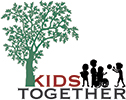When it came time to decide our child’s educational future,
the choices were overwhelming:
Private school, charter school, public school, or homeschool (at least we pretended homeschool was an option). But after experiencing the money and time constraints of a private school during preschool.
we decided to send our daughter to public school for kindergarten. Upon submitting the necessary paperwork to the district office, though, we learned we had another choice to make: Should we enroll her in the district’s dual-language program?
Dual-language programs are gaining popularity throughout the U.S., and the benefits reach beyond the acquisition of a second language. Cultural awareness, greater capacity for listening, and more creative and analytical thinking skills are some additional benefits of these programs.
“Students in immersion programs may display a lag on standardized test scores, but usually score on grade level by around grade three and frequently above grade level by the end of grade five,” says Lori Langer de Ramirez, a bilingual educator and author of Voices of Diversity: Stories, Activities and Resources for the Multicultural Classroom.
As a monolingual parent with four years of Spanish-language classes under my belt, I thought I’d sail through the first few years of homework from our daughter’s dual-language program. I was wrong.
The first year proved to be a struggle—not just for me, but for our daughter as well. Here are five things I learned along the way that might help other parents just starting their child’s dual-language journey.
Accept that you are enrolled in the program too.
Effective dual-language programs cultivate an inclusive school environment and require the parents, teachers, and students to work closely together. During back-to-school night, the teacher reviewed a triangle diagram, placing the three components at each corner of the triangle.
Prior to enrolling her in the dual-language program, I knew it would require our involvement; however, my initial perception was similar to parental involvement in a traditional education environment. Once again I was wrong. The saying, “it takes a village to raise a child” comes to mind.
In a study conducted by the University of Nebraska Foreign Language and Psychology departments, a team of Ph.D. researchers concluded: “it is likely that the programs that do best will be those that encourage parents to not only participate but to lead.”
Volunteer in your child’s classroom, join the PTA, and attend school functions. Demonstrating your enthusiasm for being a part of the school culture will encourage your child to be involved as well.
Pass notes (to the teacher).
Some dual-language programs use a model method for the first few years. The primary teacher models and solely uses the partner language (in my daughter’s case, Spanish), effectively teaching the students to speak to her in that language.
The supplemented language, typically English, is taught by another teacher. Initially, communicating with the Spanish-speaking teacher was difficult. That was until I volunteered in the classroom. Not wanting to speak English in front of the students, the teacher left me notes of instruction.
That’s when the light bulb went off: I could also pass notes to her. When I needed clarification on a homework assignment, I wrote the teacher a note.
But keep in mind that this mode of communication will only work until your child learns to read. By that point, email will become your friend, or you may have developed enough language skills yourself to communicate in person.
Find ways to make it part of your daily life.
Stealing vocabulary from your child’s homework will help you make the language a part of her daily home life. Beth Butler, bilingual educator and founder of the internationally acclaimed Boca Beth language learning series,
says “weaving your own knowledge of Spanish vocabulary words and phrases as you go through your day is beneficial” to your child’s language development. “Saying the English word, then the Spanish word for one object is highly recommended.”
Make it fun.
Access to technology will be your saving grace. Chontelle Bonfiglio, Australian mom, certified ESL teacher, and blogger at Bilingual Kidspot, offers practical advice for monolingual parents seeking to raise bilingual children:
“Use Google, download apps, watch quality Spanish TV programs or movies, and make it fun.”
During our daughter’s first grade year, we learned that she was significantly behind her peers in sight word recognition skills. We practiced them nightly, but she still struggled.
Sharing our frustrations with the teacher, she suggested using the sight words to play Bingo. The game allows your child to associate the sound of a word with the visual.
Emphasize the benefits.
It’s important for your child to understand and appreciate the benefits of a dual-language program. Find opportunities to reinforce what she’s learning. When you’re in public with your child, identify the use of another language.
Is it a store clerk that is able to help someone in another language? Or perhaps they are able to make more friends because they have learned to communicate in a language other than English?
When you show that you’ve bought into the program, your child will follow suit and be more apt to make the extra effort to buy in herself.
[/vc_column_text][/vc_column][/vc_row]


